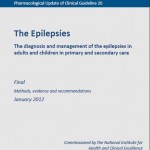
There are a number of changes underway in the way services for people with epilepsy are organised and delivered, and this new guideline includes a number of recommendations on service provision, the use of newer antiepileptic drugs and guidance in specific areas such as pregnancy and contraception, learning disability, young people.
The chapter on epilepsy and learning disability identifies a number of particular challenges in providing information and support, for example issues relating to mental capacity The authors point out that there are still large gaps in the available evidence with much of the evidence identified described as of poor methodological quality. They draw attention to the lack of placebo-controlled double blind trials.
The guidelines address a number issues, setting out the nature of the evidence base before making appropriate recommendations.
For example, ‘specialist’ learning disability versus ‘non-specialist’ care, difficulties with diagnosis, in particular the danger of confusing stereotypic or other behaviours with seizure activity; difficulties associated with people tolerating investigations, for example EEG; neuroimaging. The guidelines talk specifically about issues relating to care planning, and in particular the need to pay close attention to the possibility of adverse cognitive and behavioural effects of Anti epileptic drug therapy. The main body of the chapter however is given over to consideration of pharmacological management
The Guidelines’ authors looked for any randomised controlled trials (RCTs) which compared effectiveness of pharmacologcial interventions including pregabalin, zonisamide, lacosamide, lamotrigine, gababentin, oxcarbazepine, tiagabine, levetiracetam, topiramate, vigabatrin, phenytoin, phenobarbital, clobazam, felbamate, acetazolamide, sodium valproate, primidone and carbamazepine. On the basis of this review they state that there is “no evidence to suggest epilepsy in the learning disabled population requires any different consideration with regard to treatment compared to those without learning disability.” However, it must be stressed that people with learning disabilities may be susceptible particularly to cognitive side effects of anticonvulsant medication.
The authors go on to make several recommendations relating to personalised care planning; appropriate consultation lengths, and avoiding discrimination. In addition, attention is drawn to the need for risk assessments and the higher mortality rate in people with learning disabilities and epilepsy than in people with epilepsy who do not have learning disabilities, although epilepsy is not the major cause of death in this group.
The Epilepsies:The diagnosis and management of the epilepsies in adults and children in primary and secondary care, Pharmacological Update of Clinical Guideline 20, National Clinical Guidance Centre

Hi, Just wondering has any one used the NON CONVULSIVE ICTAL checklist from diagnostic manual 1989
Hi,
also wondering if anyone is using/has used the Nonconvulsive Ictal Signs Checklist by Dr Gedye, and what their feedback would be.
Thanks.
Hi Yashik,
thanks for your comment. Do you have a link to the guidelines so that we can point our readers to them?
many thanks,
John
Hi John, unfortunately, the guideline is copyright protected. It was printed in the Habilitative Mental Healthcare Newsletter in July/Aug 1996 and seems to have been used mostly in Canada. I have not been able to get much peer-reviewed articles on it either. Any feedback would be greatly appreciated.
Thanks Yashik,
I wonder if you have tried speaking to Michael Kerr at the Welsh Centre for LD and/or Melanie Chapman at the university of Manchester, both of whom have an interest in learning disabiities and epilepsy and may have some comment.
john